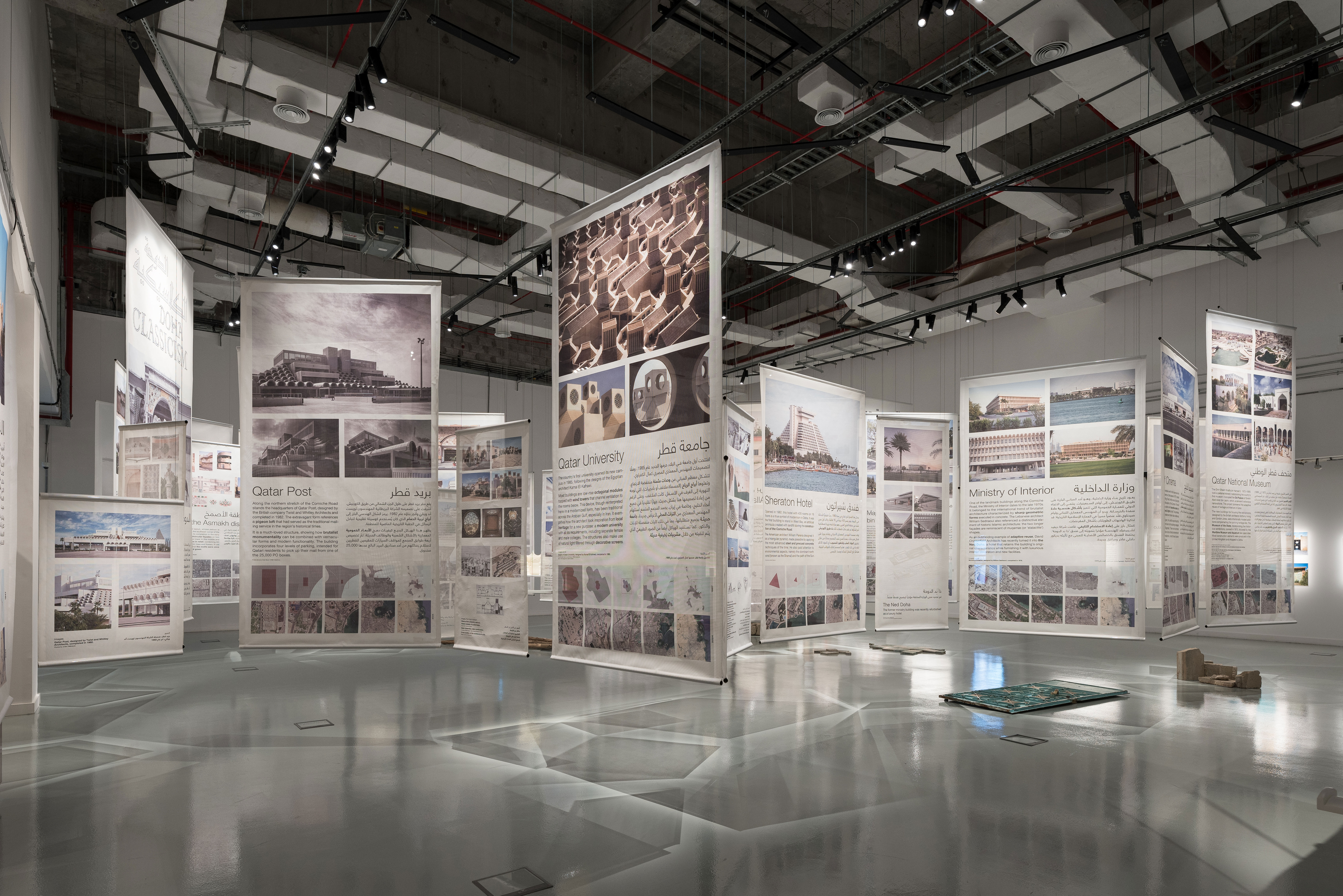The inaugural Design Doha offers a global view on Arab design
Design Doha 2024 marks the event's debut, with a curated programme (until 5 August 2024) under the artistic direction of Glenn Adamson

Any lingering doubt that the epicentre of contemporary Middle Eastern design and art has shifted away from the Levant towards the Gulf states has been firmly dispelled with the inaugural Design Doha (with programming continuing until 5 August 2024).
Comprising six faceted exhibitions centred in Msheireb – Doha’s 31-hectare mixed-use development and creative hub – alongside a sweep of satellite events, the biennial’s remit is an ambitious survey of the creative talent percolating in Qatar and the broader MENA region; though its artistic director, Glenn Adamson prefers to describe the event as ‘epic and unprecedented, spanning the full breadth of design in the Arab world’.
Design Doha 2024: the highlights

Quite apart from the vast number of designers on show – the marquee exhibition Arab Design Now, alone, features nearly 100 creatives and studios – what impresses most about Doha Design is the range of disciplines canvassed.
At the John McAslan-designed M7, a rugged low-slung pile in the centre of Msheireb whose stone-clad galleries are awash with natural light, the installations and exhibitions offer a thoughtful progression of materiality viewed through the lens of culture and history, through to contemporary storytelling and questions of the future.

100/100 Hundred Best Arabic Posters Round 04
As curator Rana Beiruti points out, the answer to the question ‘What is Arab design?’ is not a disconnected discourse. Rather, it is one coloured by globalism (literally, in the vivid celebration of graphic design in ‘100/100 Hundred Best Arabic Posters Round 04’) through collaborations with the Arab diaspora living, working and creating abroad, and with the expatriate community in the Middle-East and North Africa.

Jordanian architect Sahel Alhiyari’s towering terracotta columns
Which perhaps explains why ‘Sites - New Sites’ (2023), Netherlands- and Bahrain-based Studio Anne Holtrop’s monumental rust-red resin casts, are suspended from the triple-volume height and bring to mind magnified fragments of desert earth; ‘Eleven’ (2024), Jordanian architect Sahel Alhiyari’s eleven towering terracotta columns evoke both classical antiquity and contemporary materiality; and Studio EF’s 3D-printed ‘Jalset Sawa’ transforms recycled plastic into an elegant modular lounge whose silhouette echoes Doha’s sand dunes.

Another show at M7, ‘Colours of the City: A Century of Architecture in Doha’ is a fascinating study in 3D models, photos and film that traces the country’s architectural progression from Arabic deco to brutalism, culminating in the Omani architect Ibrahim Al Jaidah’s mesmeric Al Thumama Stadium – staging ground for 2022’s FIFA World Cup (on the occasion of which we presented a guide to Doha) – which combines millennial technology with regional heritage accents.
Wallpaper* Newsletter
Receive our daily digest of inspiration, escapism and design stories from around the world direct to your inbox.

Maryam Omar, ‘Weaving Poems’
Perhaps Design Doha’s most powerful moment, though, comes in ‘Weaving Poems’, an extraordinary installation which is staged in an unfinished concrete auditorium in M7, its vast mood-lit interiors draped with 24 massive rugs, their muted colours and hypnotic patterns inspired by the colours and patterns of nature, and handwoven by women weavers in Afghanistan’s Bamiyan region. ‘All the sketches were photographed and manipulated digitally,’ says its designer, the Afghan-born, Amman-based Maryam Omar. ‘These were then printed on large-scale paper from which the weavers read and hand-knotted the carpets by eye.’
Accompanied by the soundtrack of the clacking looms and the unguarded, melodic chatter of the Afghan weavers, the installation is, in a sense, a meditation on a centuries-old art form; but more than that, it also somehow becomes a conduit between traditional and contemporary design practices.
It may not fully capture the ephemerality of cultural identity, but if the curators behind Design Doha have anything to say about the matter, it is, particularly for a first edition, an extraordinary start.
Daven Wu is the Singapore Editor at Wallpaper*. A former corporate lawyer, he has been covering Singapore and the neighbouring South-East Asian region since 1999, writing extensively about architecture, design, and travel for both the magazine and website. He is also the City Editor for the Phaidon Wallpaper* City Guide to Singapore.
-
 EV maker Rivian creates its first Concept Experience in New York’s Meatpacking District
EV maker Rivian creates its first Concept Experience in New York’s Meatpacking DistrictUnder the High Line, in the heart of one of New York’s most famous neighbourhoods is the Rivian Concept Experience, a showroom designed to surprise and delight both long-term aficionados and total newcomers to the brand
-
 How to use AI in architecture? A practical guide with Tim Fu
How to use AI in architecture? A practical guide with Tim FuArchitect Tim Fu, an early AI adopter who regularly uses these new technologies in his practice, offers his advice
-
 The largest posthumous survey of Helen Frankenthaler puts her in the frame with Pollock and Rothko
The largest posthumous survey of Helen Frankenthaler puts her in the frame with Pollock and RothkoGuggenheim Bilbao hosts 'Painting Without Rules', a major exhibition of soak-stain innovator Helen Frankenthaler’s paintings that also includes Pollock and Rothko